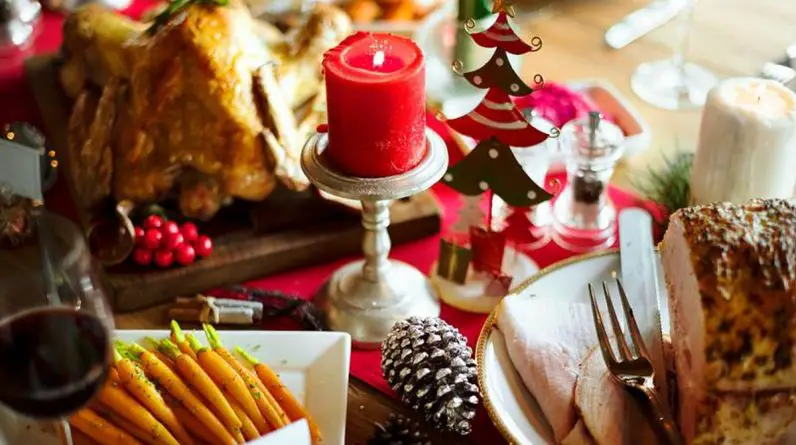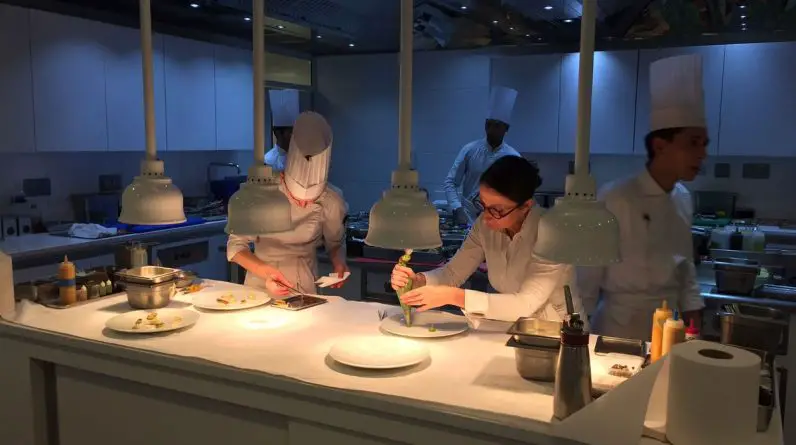Creating the perfect meal involves more than just following a recipe; it’s an art that combines the right ingredients, tools, and techniques. This article offers comprehensive guidance on everything from selecting fresh ingredients to mastering cooking methods, ensuring that your meals are as delightful as they are delicious. Whether you’re planning a special occasion or just a simple dinner, these tips and recipes will elevate your culinary skills and impress your guests.
Contents
- 1 Selecting the Right Ingredients
- 2 Essential Kitchen Tools
- 3 Mastering Cooking Techniques
- 4 Planning Your Meal
- 5 Flavor Pairing and Spices
- 6 Recipes for Special Occasions
- 7 Quick and Easy Recipes
- 8 Conclusion
- 9 Frequently Asked Questions
- 9.1 How do I choose the freshest produce at the market?
- 9.2 What are the essential kitchen tools for a beginner?
- 9.3 What is the difference between roasting and baking?
- 9.4 How can I plan a meal that accommodates dietary restrictions?
- 9.5 What are some basic tips for flavor pairing and using spices?
- 9.6 Can you suggest a quick recipe for a busy weeknight?
Key Takeaways
- Understand the importance of selecting fresh and seasonal ingredients to enhance the flavor and nutritional value of your meals.
- Familiarize yourself with essential kitchen tools to improve efficiency and precision in your cooking.
- Master various cooking techniques to diversify your meal preparation and bring out the best in your ingredients.
- Plan your meals to balance nutrients and accommodate dietary restrictions, ensuring a healthy and inclusive dining experience.
- Explore flavor pairing and utilize spices, marinades, and rubs to create memorable and tasty dishes.
Selecting the Right Ingredients

Choosing Fresh Produce
Selecting fresh produce is crucial for any meal. Always check for vibrant colors and firm textures to ensure freshness. Avoid items with bruises or blemishes. Seasonal fruits and vegetables not only taste better but are often less expensive.
Understanding Meat Cuts
Knowing your meat cuts can greatly enhance your cooking. Different cuts require different cooking methods; for instance, tenderloin is best for quick searing, while brisket is suited for slow cooking. Here’s a quick guide:
- Tender cuts: Tenderloin, sirloin, rib-eye
- Slow cook cuts: Brisket, chuck, shank
Selecting Seasonal Items
Incorporating seasonal items into your meals can provide peak flavors and nutrition. Plan your shopping around what’s in season. This not only supports local farmers but also reduces your carbon footprint. A seasonal chart can be helpful for beginners.
Essential Kitchen Tools

Knives and Cutting Boards
Choosing the right knives and cutting boards is crucial for efficient food preparation. Ensure you have a variety of knives, such as a chef’s knife, paring knife, and bread knife, to handle different tasks. Cutting boards should be sturdy and made from materials that won’t dull your knives, like bamboo or hard plastic.
Pots, Pans, and Baking Dishes
Selecting the appropriate pots, pans, and baking dishes can greatly influence the outcome of your dishes. For most cooking needs, a set of non-stick pans, a stainless steel pot, and a cast-iron skillet are essential. Consider the oven-safe feature for versatility in your cooking methods.
Measuring Tools and Scales
Accurate measurements are key to perfecting recipes. Invest in a set of measuring cups, spoons, and a digital scale. This will ensure that you can follow recipes precisely and experiment with consistency in your cooking. A digital scale is particularly useful for baking, where exact ingredient quantities are crucial.
Mastering Cooking Techniques

Sautéing and Stir-Frying
Sautéing and stir-frying are quick, high-heat cooking methods that require constant attention to avoid burning. Use a high-quality oil with a high smoke point to ensure your food cooks evenly without smoking out your kitchen. Essential for quick weeknight dinners, these techniques bring out the flavor in fresh vegetables and meats.
Roasting and Baking
Roasting and baking are fundamental techniques for creating flavorful, tender meals. The key is to maintain a consistent oven temperature and to use proper timing. Roasting enhances the natural sweetness and texture of vegetables and meats, making it perfect for hearty meals.
Grilling and Smoking
Grilling and smoking impart a distinctive smoky flavor that is hard to replicate with other cooking methods. Preparing your grill or smoker correctly and choosing the right wood or charcoal can make a significant difference in the taste of your food. Here are some tips for successful grilling:
- Preheat your grill to the appropriate temperature before adding food.
- Keep the lid closed as much as possible to maintain temperatures and smoke levels.
- Use marinades and rubs to add extra flavor and tenderness to your dishes.
Planning Your Meal
Planning a meal is more than just choosing what to cook; it’s about creating a harmonious experience that caters to the health, timing, and preferences of everyone at the table. Proper planning ensures that your meals are not only delicious but also nutritionally balanced and tailored to the occasion.
Balancing Nutrients
Ensure each meal is nutritionally complete by including a variety of food groups. Proteins, carbohydrates, and fats should be balanced to provide sustained energy and satisfaction. Consider the following:
- Proteins: meat, fish, legumes
- Carbohydrates: whole grains, fruits, vegetables
- Fats: oils, nuts, seeds
Timing Your Courses
Plan the timing of each course to enhance the dining experience. Start with lighter dishes and gradually move to the main course, ensuring each dish is served at the ideal temperature and freshness. Use a simple timeline to keep track:
- Appetizers
- Main course
- Dessert
Accommodating Dietary Restrictions
When planning meals, it’s crucial to consider any dietary restrictions of your guests to ensure everyone can enjoy the meal. Ask in advance for any special needs like allergies or preferences such as vegetarian, vegan, or gluten-free diets. This foresight shows thoughtfulness and care in meal preparation.
Flavor Pairing and Spices

Herbs and Spices Basics
Understanding the basics of herbs and spices is crucial for enhancing the flavor of your dishes. Learn to identify the freshness of herbs and spices, as this can significantly impact the taste of your meals. Store them properly to maintain their potency over time.
Creating Flavor Profiles
Creating compelling flavor profiles involves more than just mixing spices; it’s about achieving a balance that complements the main ingredients. Experiment with different combinations to discover what works best for your palate and the type of cuisine you’re preparing.
Using Marinades and Rubs
Marinades and rubs are excellent for adding depth and complexity to your dishes. Use a variety of acids, oils, and spices to prepare marinades that tenderize and infuse your food with flavor. Rubs, on the other hand, provide a quick and easy way to season meats and vegetables before cooking.
Recipes for Special Occasions

Holiday Feasts
Preparing a holiday feast can be a delightful yet daunting task. Plan your menu ahead to ensure a smooth preparation process. Consider traditional dishes that resonate with the spirit of the holiday, and don’t forget to include options for guests with dietary restrictions.
Birthday Treats
Birthdays are a time for joy and celebration. Make the birthday person feel special with a customized menu. Think about their favorite foods and flavors, and create a meal that reflects their tastes. A well-thought-out cake or dessert is essential, making the day memorable.
Romantic Dinners
Creating a romantic dinner requires attention to detail and an ambiance that speaks of love. Choose dishes that are not only delicious but also easy to eat. Ambiance is key, so consider soft lighting and gentle music to enhance the dining experience. A simple yet elegant menu can set the perfect mood for a night to remember.
Quick and Easy Recipes

In today’s fast-paced world, having a repertoire of quick and easy recipes is essential for anyone looking to prepare delicious meals without spending hours in the kitchen. These recipes are designed to minimize preparation and cooking time while maximizing flavor and nutritional value.
30-Minute Meals
Speed is of the essence when you’re hungry and in a hurry. These meals are not only quick to prepare but also offer a variety of options to suit any taste. From speedy stir-fries to quick-cook pastas, you’ll find dishes that can be on your table in half an hour or less.
One-Pot Wonders
The beauty of one-pot meals lies in their simplicity and the minimal cleanup required. Whether it’s a comforting soup or a hearty stew, these recipes use just one pot to create a fulfilling meal, making them perfect for busy weeknights.
No-Cook Delights
Sometimes, the best meals are the ones you don’t have to cook at all. These no-cook delights are perfect for hot days or when you simply want to keep things cool in the kitchen. Think vibrant salads, wraps, and other dishes that require zero cooking but deliver full flavor and satisfaction.
Looking for quick and easy recipes that will transform your meals without the hassle? Dive into our ‘Quick and Easy Recipes’ section for a treasure trove of delightful dishes that are both simple to prepare and delicious. Whether you’re in a rush or just want to try something new, our recipes are designed to suit your busy lifestyle. Visit our website now and start cooking up a storm with minimal effort and maximum flavor!
Conclusion
In conclusion, preparing the perfect meal is an art that combines creativity, precision, and passion. By following the tips and recipes provided in this article, you can enhance your cooking skills and delight your taste buds. Remember, the key to a successful meal lies in the careful selection of ingredients, proper preparation techniques, and the joy of sharing your culinary creations with others. So, don your chef’s hat, embrace the adventure in the kitchen, and get ready to create some unforgettable dining experiences.
Frequently Asked Questions
How do I choose the freshest produce at the market?
Look for vibrant colors, firm textures, and a fresh smell. Avoid produce with bruises or blemishes. Seasonal produce is also likely to be fresher.
What are the essential kitchen tools for a beginner?
Start with a good chef’s knife, a cutting board, a few pots and pans, measuring cups, and spoons. These tools will cover most cooking needs.
What is the difference between roasting and baking?
Both methods involve cooking food in an oven, but roasting is typically used for cooking meats and vegetables with a dry heat, while baking is best for pastries, bread, and casseroles.
How can I plan a meal that accommodates dietary restrictions?
Start by knowing the specific restrictions of your guests, such as allergies or dietary preferences. Choose dishes that can be easily modified or offer a variety of dishes to ensure everyone has something to enjoy.
What are some basic tips for flavor pairing and using spices?
Understand the flavor profiles of spices and how they complement each other. Start with small amounts to prevent overpowering dishes and taste frequently. Experiment with fresh herbs and ground spices for the best results.
Can you suggest a quick recipe for a busy weeknight?
Try a 30-minute stir-fry: cook your choice of sliced meats and vegetables in a hot pan, add a simple sauce of soy, garlic, and ginger, and serve over rice or noodles for a quick and satisfying meal.







